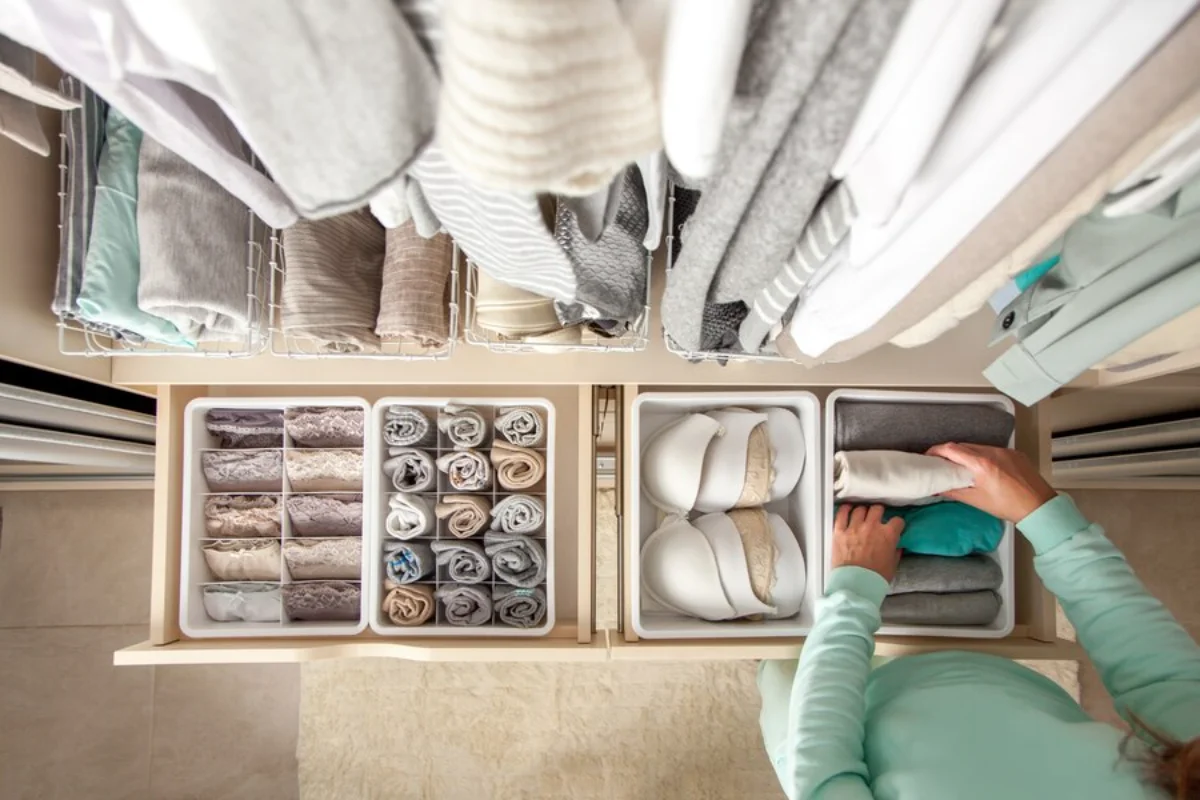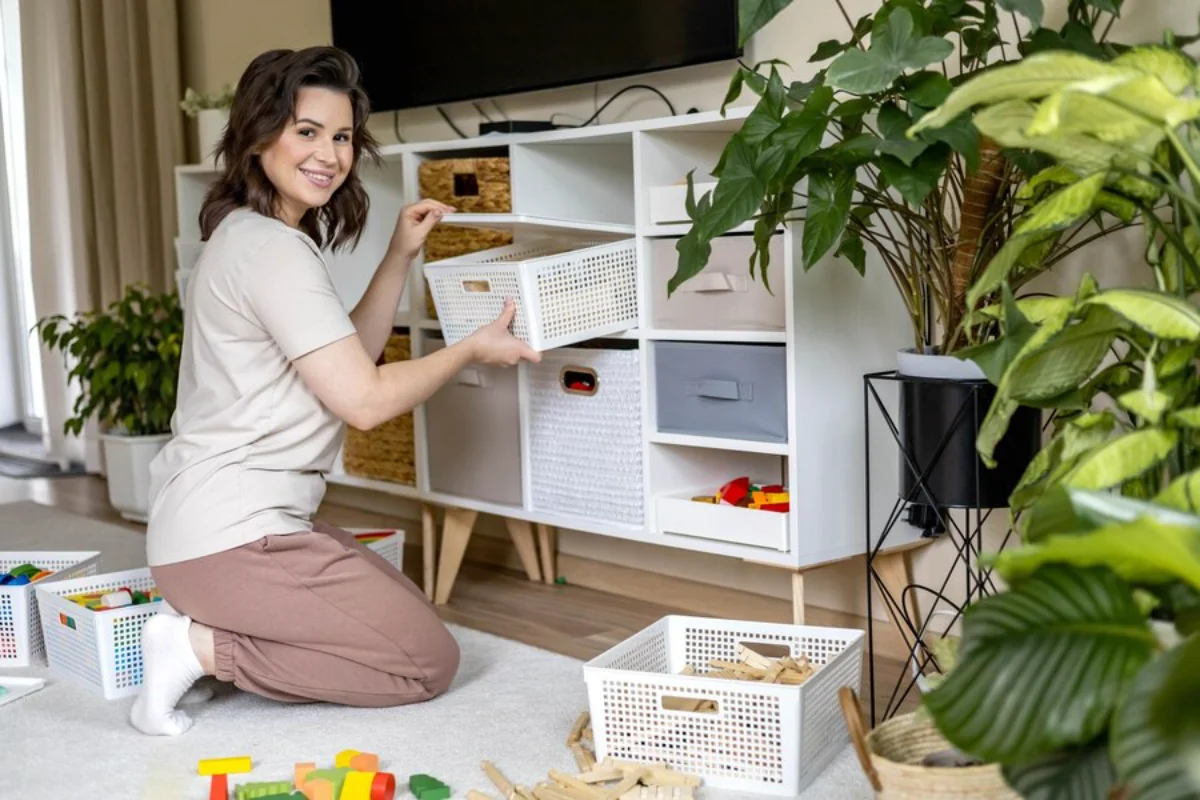
How to Declutter Your Home Using the KonMari Method
Having a decluttered home makes you feel calm, organised and functional. A popular decluttering method is the KonMari Method, invented by Marie Kondo. I moved from my location — bundles pull-out drawers and closets — to by category and keep only those goods that “spark joy.”
However, it has also changed how we live our lives going forward. Organising your home leads to an organised mind; it helps you concentrate on what is essential. In this blog post, we will delve into the KonMari Method, discuss valuable tips for decluttering, and outline a step-by-step process for tidying and maintaining your home.
Pro Tip:
Start with the easiest category—clothing—before tackling sentimental items. This builds decision-making confidence and prevents emotional fatigue.
Quick Guide: Decluttering with the KonMari Method
- Commit to the Process – Set a clear goal and prepare for transformation.
- Visualise Your Ideal Home – Define how you want your space to feel.
- Declutter Before Organising – Remove unnecessary items first.
- Sort by Category, Not by Location – Follow the order: Clothes → Books → Papers → Miscellaneous → Sentimental Items.
- Keep Only What Sparks Joy – If an item does not bring joy, thank it and let it go.
- Maintain a Clutter-Free Home – Follow mindful organisation habits.
Important:
The KonMari Method is about creating a mindful and intentional home, not just about reducing clutter. It helps establish long-term organisation habits that enhance daily life.
Understanding the KonMari Method

Marie Kondo’s method is based on the idea that a clutter-free home leads to a clutter-free mind. Unlike traditional cleaning, the KonMari Method is a mindful and systematic approach to decluttering, ensuring that you keep only those items that bring joy and serve an actual purpose.
The method consists of six core principles:
Commit to the Process
Decluttering takes time and effort. Before you begin, set a clear goal and mentally prepare yourself for the transformation ahead. Recognise that tidying is an investment in your well-being and will require dedication.
Imagine Your Ideal Lifestyle
Visualising your ideal home environment will help guide your decluttering decisions. Ask yourself:
- What kind of space do I want to live in?
- How do I want my home to feel?
- What atmosphere do I want to create?
- How can my home reflect my values and personality?
Take time to journal your vision or create a mood board to help you stay focused on your end goal.
Discard First, Organise Later
The KonMari Method emphasises letting go of unnecessary items before organising. Sorting everything before storage prevents the accumulation of excess clutter. This ensures that the items you keep have value and are not just stored out of habit.
Tidy by Category, Not by Location
Instead of tidying room by room, Marie Kondo suggests sorting by category: clothing, books, papers, miscellaneous items, and sentimental items. This prevents the common mistake of moving clutter from one area to another instead of addressing it properly.
Follow the Right Order
The decluttering process should be systematic. Follow this specific order for maximum effectiveness:
- Clothing
- Books
- Papers
- Komono (Miscellaneous Items)
- Sentimental Items
This order moves from more effortless to harder, allowing you to build confidence before tackling emotionally challenging items.
Keep Only Items That Spark Joy
This is the heart of the KonMari Method. Hold each item and ask yourself: Does this spark joy? If an item no longer brings happiness, express gratitude for its service and let it go.
Step-by-Step Guide to Decluttering Your Home

Step 1: Decluttering Clothes
Start by gathering all your clothes in one place. This includes items from your wardrobe, laundry room, and storage areas.
Process:
- Take out every piece of clothing and place it in one pile.
- Pick up each item and ask yourself: Does this spark joy?
- If it does, keep it; if not, thank it for its service and discard it responsibly.
- Fold clothes vertically to save space and enhance visibility.
Additional Tips:
- Seasonal Sorting: Store off-season clothes separately to free up space.
- Donate or Sell: Give unwanted clothes to charity shops or sell them online.
- Invest in Quality Pieces: Avoid impulse buying and focus on durable, timeless clothing.
Step 2: Organising Books
Books hold knowledge and memories, making them challenging to declutter. However, keeping only books that genuinely inspire you can help streamline your collection.
Process:
- Gather all your books in one location.
- Sort them into categories: fiction, non-fiction, reference, and sentimental.
- Pick up each book and ask: Does this spark joy?
- Keep only the ones that genuinely resonate with you.
Additional Tips:
- Avoid ‘Someday’ Books: If you haven’t read a book in years, it’s unlikely you will.
- Digitise Where Possible: Consider e-books and audiobooks to reduce physical clutter.
- Create a Dedicated Reading Space: Organise books neatly on shelves and ensure easy accessibility.
Step 3: Sorting Papers
Papers can quickly accumulate and become overwhelming. Follow a three-category sorting system:
- Pending (Actionable): Bills, important letters, and documents requiring attention.
- Necessary (Long-Term Storage): Insurance policies, contracts, medical records.
- Discard: Expired warranties, old receipts, and unnecessary paperwork.
Decluttering Tips:
- Go Digital: Scan and store important documents electronically.
- Use a Filing System: Label and categorise essential papers.
- Shred Sensitive Documents: Prevent identity theft by securely disposing of personal information.
Step 4: Decluttering Miscellaneous Items (Komono)
This category includes kitchen items, bathroom products, office supplies, and home accessories.
Process:
- Gather similar items together.
- Assess usefulness and sentimental value.
- Keep only what you use and love.
- Store items in designated spaces.
Step 5: Letting Go of Sentimental Items
Sentimental items hold deep memories, making them difficult to part with. However, holding onto too many sentimental belongings can create unnecessary clutter.
Process:
- Select a few meaningful items to keep.
- Take photos of items you no longer need but want to remember.
- Store sentimental objects in a memory box.
- Display a select few items instead of storing them all.
Tips for Maintaining a Clutter-Free Home
Once your home is decluttered, establish habits to maintain tidiness:
- Adopt a ‘One-In, One-Out’ Rule: Every time you buy something new, eliminate something old.
- Regularly Reassess Your Belongings: Schedule periodic decluttering sessions.
- Embrace Minimalist Organisation Habits: Store items in clear, designated spaces.
- Avoid Impulse Purchases: Only buy what truly serves a purpose.
- Set a Cleaning Schedule: Daily tidying prevents clutter from piling up.
FAQs About the KonMari Method
1. What makes the KonMari Method different from regular decluttering?
The KonMari Method focuses on keeping only items that “spark joy” rather than just getting rid of clutter. It also follows a specific order to make decision-making easier.
2. How do I know if an item sparks joy?
Hold the item and pay attention to your feelings. If it makes you happy or serves a meaningful purpose, keep it. If not, thank it and let it go.
3. How long does it take to declutter using the KonMari Method?
It depends on the size of your home and the number of items you own. Some people complete it in a weekend, while others take weeks. The key is consistency.
4. What should I do with items I decide to discard?
Donate, sell, or recycle whenever possible to reduce waste. Sentimental items can be photographed before parting with them.
5. How do I prevent clutter from building up again?
Adopt the One-In, One-Out Rule—for every new item you bring in, remove an old one. Regularly reassess your belongings to maintain a clutter-free home.
Achieve a Clutter-Free Home with the KonMari Method

Following the KonMari Method, you can transform your home into a space of harmony and joy. Decluttering using this method is not just about tidying up—it’s about creating a lifestyle that aligns with your values.
Minimalism is a journey, not a destination. The more you practice mindful decluttering, the easier it becomes to maintain a serene, clutter-free environment. Are you ready to embark on your decluttering journey? Start today and experience the magic of tidying up!


